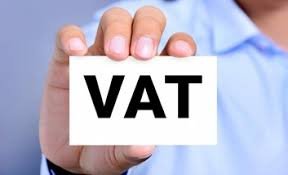A value-added tax (VAT), known in some countries as a goods and services tax (GST), is a type of tax that is assessed incrementally, based on the increase in value of a product or service at each stage of production or distribution. VAT essentially compensates for the shared services and infrastructure provided in a certain locality by a state and funded by its taxpayers that were used in the elaboration of that product or service. Not all localities require VAT to be charged and goods and services for export may be exempted (duty free). VAT is usually implemented as a destination-based tax, where the tax rate is based on the location of the consumer and applied to the sales price. Confusingly, the terms VAT, GST, consumption tax and sales tax are sometimes used interchangeably. VAT raises about a fifth of total tax revenues both worldwide and among the members of the Organisation for Economic Co-operation and Development (OECD). As of 2018, 166 of the world's approximately 193 countries employ a VAT, including all OECD members except the United States, which uses a sales tax system instead.
There are two main methods of calculating VAT: the credit-invoice or invoice-based method, and the subtraction or accounts-based method. Using the credit-invoice method, sales transactions are taxed, with the customer informed of the VAT on the transaction, and businesses may receive a credit for VAT paid on input materials and services. The credit-invoice method is the most widely employed method, used by all national VATs except for Japan. Using the subtraction method, at the end of a reporting period, a business calculates the value of all taxable sales then subtracts the sum of all taxable purchases and the VAT rate is applied to the difference. The subtraction method VAT is currently only used by Japan, although subtraction method VATs, often using the name "flat tax", have been part of many recent tax reform proposals by US politicians. With both methods, there are exceptions in the calculation method for certain goods and transactions, created for either pragmatic collection reasons or to counter tax fraud and evasion.
EU VAT vs. USA Sales Tax
VATs and sales taxes can raise the same amount of revenue; the difference lies in at what point the money is paid – and by whom. For an example: Again, assume a VAT of 10 percent. A farmer sells wheat to a baker for 30 cents. The baker pays 33 cents; the extra 3 cents represents the VAT, which the farmer sends to the government. The baker uses the wheat to make bread and sells a loaf to a local supermarket for 70 cents. The supermarket pays 77 cents, including a 7 cent VAT. The baker sends 4 cents to the government; the other 3 cents were paid by the farmer. Finally, the supermarket sells the loaf of bread to a customer for $1. Of the $1.10 paid by the customer, or the base price plus the VAT, the supermarket sends 3 cents to the government.



